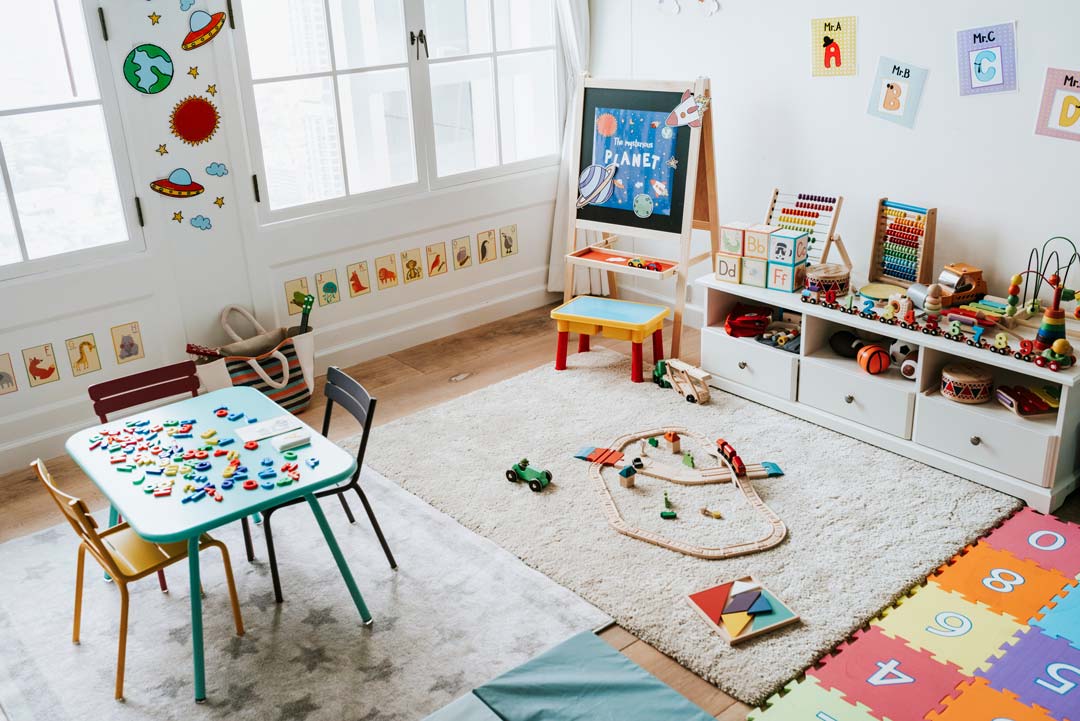INVITATIONS TO PLAY IN AN EDUCATION AND CARE SETTING
This topic is part of the issue of play space layout and design to support education practices. The room is often regarded as the other teacher in the space. The way we set out the space, place props, furniture, and resources, is crucial to the successful use of the space by adults and children alike. Designing and creating appropriate learning environments is a skill we all need to use each day in the early childhood world.

As we consider our rooms, transition, and outdoor spaces, we should imagine how they will work if we put furniture this way or that, these resources here or there. We must become the children and look at the space through their eyes. It should not be about what is easy for us as adults, but what may interest children and encourage them to explore, investigate and learn. What will they find of interest here, how could it look and what range of experiences could be enjoyed in the space? How might they use it? Where could it take their interests? What might they learn as they play here?
This is where creating invitations to play becomes particularly important. In each area of the room, we carefully place blocks, mats, puzzles, books, puppets, art materials and so on. How do children know where and when they can use these items? Can they take a puzzle across the room to a different area? Is this allowed? How will they know where to use the puzzles, blocks, cars, construction items and others if they are always presented sitting on a shelf?
We show them by creating invitations for them to play in specific spaces. This visually tells them that the experience is a sanctioned one and what this space is suitable for. Children sometimes need us to invite them to play in certain ways in specific areas. They may not understand what the space is for if we don’t provide some clues – just as illustrations provide clues about the story when reading a book, our invitations provide clues for play spaces.
Some top tips for you include:
- Add and remove items as children’s interest’s shift focus over time
- Allow time over some days for your invitation to be used and reused as children like to revisit some ideas and extend their own interests as they play
- Be age-appropriate in what you set out
- Remember that sometimes less is more – so don’t always overfill a space, let children add their own items over time, so mix it up with both simple and more complex invitations
- Create those boxed collections of materials and items over a wide range of interest areas including sensory items for stress relief
- Consider the current invitations and if they allow children to come to their own conclusions and allow for a range of learning outcomes – don’t make them closed-ended
- Give children agency to add or subtract items if they wish
- Closely observe children and learn their preferences and style of play then act on it to extend them and their ideas to help them grow
How do we do this? Think about the room, play spaces on verandahs and outdoors and consider what you could do with the resources you have at hand, or with recyclable items. Many terrific resources things can be purchased cheaply at Op shops and online. Create great collections of related items in labelled boxes so this can be set up whenever children’s interests move in that direction.
CONTACT ONE OF OUR CENTRES
Out & About Care and Education
2 Newspaper Place
Maroochydore Q 4558
newspaperpl@outandabout.net.au
07 5413 8099
CONTACT NEWSPAPER PL
Out & About Care and Education
30 Dalton Drive
Maroochydore Q 4558
daltondr@outandabout.net.au
07 5479 1411
CONTACT DALTON DR
Out & About Care and Education
6 Mooloolah Rd
Mooloolah Valley Q 4553
mooloolah@outandabout.net.au
07 5356 9323

